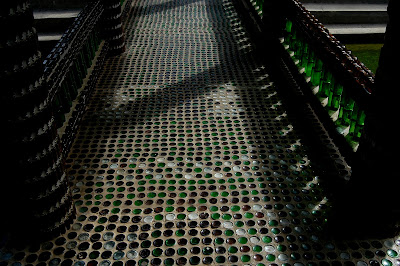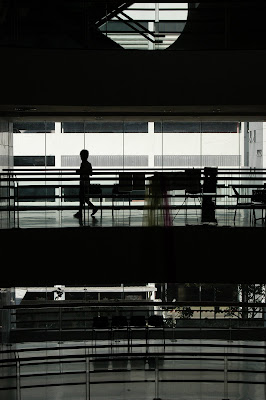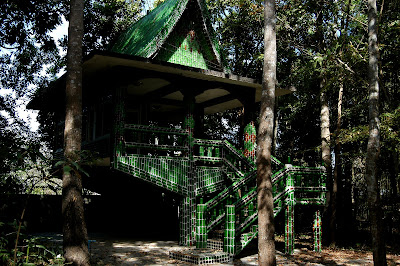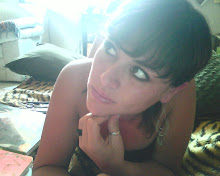How to talk about India without doing so with the same lack of shame that this country has to show the world its chaos and contradictions, its deep culture and sensory delights, its complexities and simplicities, its excesses and restrictions of many years of identity building and of so, so many people inhabiting the same land. But mostly, I must warn, abounds in these words subjectivity and relativity for having simply a single point of view, the product of just a glimpse of a culture wide and fertile, which as I mentioned earlier, manifests itself in a chaotic contradiction and complexity. And that is how ideas spring out when I sit down to write this chapter of the journey. How to fit information? How to give everything without making it too much to you the reader? How to invite you to stay in this narrated trip that I hope evokes your senses and emotions? And I just wish that like us, this country overflows, and touches and leaves you wanting more. In an attempt to put it all together many details pop up and though I have made a selection of topics, the text predominantly ends with a narrative structure interrupted by thoughts that spring to the moment, and that we decided to distinguish in italics. Finally this is the nature of the text, linking ideas with descriptions of events and thoughts.
And so it goes that I start this journey with high expectations. Looking out the window ´s plane Mumbai begins to be seen. An urban area scattered to the sea. From a distance palm trees and buildings are drawn. As the plane descends I, more sharply distinguishes small and fragile sheet houses. Having landed we came out from the airport, a dense and moist heat breeze hits us. We paid a taxi and ask to take us to the cheap hotels area. During the long journey and with my virgin senses eager to know this culture, I'm getting surprised at the great complexity of this country which is already providing me with some first impressions:
-The traffic -
The road to downtown was a long, hot and heavy one. This city traffic is quite unique because in a large avenue old people, women with children and men pushing carts full of packages walk side by side, while bicycles and motorcycles, sometimes with more than 3 people, go weaving down the street, pushing through cars, Rick Shaws (motorcycle and bicycle taxis), trucks and public buses and, if one thinks to have seen it all, in the middle of the avenue, is a cart pulled by oxen appears. There is no empty space, all spaces are filled. Suddenly I pay attention to the back of some vehicles and notice a sign that says "horn * ok * Please".
My attention is diverted from the traffic after almost two hours of having been in the traffic flow. We have arrived at the center of Mumbai. We got off the taxi and now we have to find a place where I could wait with the bags, while Juan Carlos looks for a good and cheap enough hotel to spend the night. As I walk I hear.
-The noise -
In India, noise is a constant character. One is hardly in a place where mostly cars and motorcycles are not announcing their way. In India driving is handled by ear. The horn is undoubtedly a very useful tool, if not more so, as the mirror and turn signals. Similarly the constant calls from sellers and drivers offering their services, combined with the vehement conversations -that for some reason the locals keep on in a tone that sometimes seems more like a fight-. In the background there is always music-mostly Indian pop- that comes from radios and televisions. Sounds of silence are always overwhelmed by noises. At first, all sounds drown care, but like everything else, the ear gradually gets used and becomes selective, at last, standing in the heart of Mumbai, the economic capital of the subcontinent, inevitably, something new always gets attention and reflection.
-A public society of men -
We have arrived at a popular restaurant in which we decided I should wait. I am sitting alone and I am not only the only woman among many men, but obviously besides a foreigner. No one is coming, but everyone watches. They have no shame whatsoever in stare, I feel nervous and unsure, but eventually discover that in this country that is not that is because of me but that I am a woman and in this society is hard to look women on the street.
The role of women, with few exceptions, is at home, public life belongs to men. If anything, you can see some women shopping in groups or in the case of higher social classes in a cafe or at breakfast. But I dare to say that out of 10 people on the street 1 or 2 are women; business places, offices, public and private sector services are mostly attended by men.
Stunned by my first cultural shock, I decided myself to write in my journal. I ask for a cup of tea and start writing with the greatest desire to hide-protect me on my writing, while waiting for Juan Carlos. A boy brings a small cup; I give the first sip and the first real taste of India comes to me, chai tea.
-The flavors of India -
From that moment on a new more comfortable relationship with this culture begins: food, drinks ... the flavors of India! So the gender, traffic and noise issues pass to another plane. And let me, I must say, nothing is simple in India, neither the taste of tea or lassi, nor even the most mundane of dishes lacked a complex combination of spices and vegetables that are most often a real delight, especially for vegetarian stomachs -like ours-. What then to say about the exotic and spicy dishes of southern India, masalas, curries, Thalis and pharantas? And undoubtedly, there is still much we did not try. How to explain you about the reactions of the mouth when discovering all the so well combined flavors? And is that a culture so old -and mostly vegetarian-, like this, has managed to mix flavors over the years that have been refined and -I repeat- from my point of view become a paradise for the taste.
Once installed, the daily travel routine occurs under the need to go out at dawn and dusk when the sun offers the best light for photographs. So every day we walked the streets of the places we visited, first in Mumbai and in our journey to other cities and towns, but it was always common for the nose to pass from one to another sent.
-The smells of India.
Among the strongest contrasts is the unavoidable meeting of odors. Yes, for some reason in this country people urinate on the streets. In some cases there are spaces available for that, but the vast amount of men do it in public spaces: sidewalks, streets, parking lots, stairs, etc. That makes walking in some places difficult. It is common, yes, but that is not the constant that distinguishes the smell, after a while one find himself jumping from scent to scent, from the pervading-strong smells to hypnotic scents and essences that come from natural oils and incenses. Temples full of flowers also provide fresh smells and so do the food establishments by releasing their spice-laden vapors. Already at this point of the trip, I have discovered that nothing is black and white, but India, certainly handles a wide range of stimuli, from the most seductive, to the even most unpleasant; a perfect analogy of life.
An oasis in the desert.
After nearly a week in Mumbai and with some urgency to get out of town, we headed towards Pushkar, an oasis and Hindu pilgrimage center located in Rajasthan, northwest of the country. We took a 17 hours train to Ajmer, where we catch another bus, 15 minutes later our final destination. We arrived at night and went direct to the hotel, so the impact of the place would be given to after resting. Here I must say that my expectations were very high, since Juan Carlos who had already been there years ago had created an image, so the paradise I was expected to see was quite distant to the tourist paradise which was now in front of me.
-A sacred lake dried because of pollution-
According to the local Brahmins, this place is sacred because Brahma, the Hindu god of creation brought forth from a lotus flower the sacred lake water. Thus, for many years, millions of Hindus have made their way into this place and built beautiful temples around the lake. However, last year (2009) the government decided to dry it out due to high water pollution. Apparently, statues and little figures that parishioners have submerged for so long, give off chemicals that were polluting the lake until they had to take action. They also say that they will dig deeper and fill it again, it is to be seen whether this would work out. However, this reality leaves me thinking about how human beings, for one reason or another, keep destroying natural and religious resources. What Hindus would think to see the lake which for years concentrated the faith of many, become a dry pothole filled with litter where only cows pass? What we humans do that now even our holy places aren´t kept free from our impact and yet it seems we do not to react?
With that image of the lake, I go through the small town streets. Houses are all painted the same light blue and temples, ranging from the most luxurious to the simplest. It is a picturesque village; people tend their clothes in the windows and make their life on the streets, which near the lake are mainly dedicated to tourism.
Everything seems as an oriental style circus made for Westerners. Handicrafts ready for the buyer and the acute merchant instigates and, harasses anyone who is going through. In this village, perceived daily life revolves around tourism. In reality around money. But who to blame? the tourist who wants to peer into the beautiful places of the world or people who see in it the possibility of making a living?
Eventually I get used to what I see and react to the various stimuli, especially when women passing on the street flapping the beautiful colors of their clothes, then, my visual delight went off harder, because for me colors are the greatest gift that God gave to life, and here, especially abound.
-The colors, shapes and textures -
I love India; people here use colors without fear. It dares to use the more vivid reds, together with screaming yellows thus creating more acute combinations in so many diverse fabrics. Here it is women who usually are decorated with colors and textures, however, there are found also in the turbans of men. The murals made with mineral and natural dyes adorning all corners of India. On trucks, on cars, on small and large establishments, in the market, everywhere colors, shapes and textures are overflowed. And there somebody is, witnessing simply the use of color in full swing. A draft for people who like me love the light-range that adorns life.
While in Puskar, having recorded and photographed Anita (the documentary´s seventh child), Juan Carlos and I decided to invest for our future in Mexico, so we spent a week picking "goods" (clothing, textiles, furnishings and accessories). However, after only a week to check out prices, go to stores, seeking the best merchandise, making an inventory and other necessities, we were already fed up. So after sending the 4 filled packs to Mexico, we left Pushkar with the idea of not returning there for quite some time. We took a bus to Agra, where he had the opportunity to see the Taj Mahal.
-Taj Mahal-
We arrived in Agra at five in the morning; we looked for a hotel and immediately took a bicycle Rick Shaw. The scenario that could be seen from the road was special. At that early time, there were almost no people or cars in the city. The day began to draw clear between the fog. When we arrived there, we passed a park and some brown buildings began to appear. To me that was already beautiful enough to steal my whole attention. We pay $ 20 USD entry and immediately Juan Carlos asked me to close the eyes. So I did and I was guided by a large portion of the road. Following his directions we arrived where he finally told me to open the eyes. Impressively right in front of us was the superb perfection built in marble, the neat symmetry product of human labor. The picture was perfect, and there was still the dawn mist giving atmosphere to the place. Thousands of tourists came and unavoidably, quietly watching from afar the ostentatious place. We got nearer and could see the many cared details, precious stones incrusted to the ornamentation, carved marble, polished and carved with shocking precision. And in the center, the tomb of a woman, passion and pretext to erected what is now considered one of the wonders of the modern world.
Delhi, Varanasi and reverse...
Absorbed, we left the place we got to the hotel to rest and the next day we left early by train towards New Delhi, where through Hospitality Club, our hosts Meera and Ashwani were waiting for us. The four days we stayed at home their attentions were very special. With them we had the opportunity to have a genuine cultural exchange through conversations, photographs and shared experiences. With them we really found what we were looking for, a chance to meet the intimacy of a Hindu household. By the same means, we met Sonny, a young Sikh with whom we had besides the opportunity to go to several places (without the help of a local we could not have known), hear and learn another point of view of the world through long and special conversations. Sonny reaffirmed in us the sense of hospitality and service that people of India has.
-people, so many people-
India is the second most populated country in the world. Here there are millions of people trying to survive in this jungle of gender issues, poverty, poor health and development. All fighting for daily life and in that struggle everything becomes possible. On the street whole families live, taking over public places at night. There are drugs and disadvantages belonging to the street life, in contrast to the majestic buildings holding government offices and –just to mention one example-the mansions that are available to embassies and their diplomats are so big and bulky that those who have walked on those streets, next to misery, can witness such an incredible rudeness. In India, as in the rest of the world, social and economic inequalities are grotesque; the rich, encapsulated in his late model air condition car, pushing their way through the constant turmoil found everywhere: trains, buses, streets , houses, everything that is overflowed with people and problems. A couple of things that to the outsider ends to upset are: first, the open curiosity, no matter what one does, if it looks interesting for them, there would always be at least a couple of eyes near, very near. And the other is that many of them have the habit of always trying to get an economic advantage. That ends up becoming tired: to be always looking around with careful attention expecting something, and to put constantly awareness to small details and to the constant obvious abuse that are common between the traveler and the locals. But this is always contrasted with the smile, the hospitality and above all the tranquility that this society offers. The Hindu has a certain charm, freshness and above all some joy that ends up seducing the foreigner and they know it, and use it.
After a week of being in Delhi and having a deeper approach to people, Juan Carlos and I went to Varanasi, the holiest city on the banks of the Ganga, the sacred river. We arrived by train and then look for the hotel where Juan Carlos was when always there. The streets are so small that they hardly fit vehicles. That makes them much quieter and thus, amid the noise and chaos as elsewhere, the silence and tranquility are appreciated by many visitors in the quest to learn music, yoga, meditation and Indian art. Varanasi offers beautiful views over the river, decorated with exotic sadhus –wise men- in religious ceremonies. From small schools of music, melodies emerge sitar, tabla and flutes.
-Anita´s mistake -
Varanasi was a place to stay and so we planned but one day while backing up documentary information, Juan Carlos discovers that he recorded taped something else over Anita´s interview. It was clear that we should return as we had promised and engaged to Anita, she knew it was the seventh child of the documentary and morally there was no chance that it would be somebody else. Our feelings fluctuated between guilt and frustration, but finally accepted it was even better to have realized it while in India, rather that in another country or worse, already in Mexico. Thus, we return 1000 kilometers by train to Jaipur, then bus to Ajmer and finally Pushkar again. There we contacted Deepu and agreed to another interview with Anita. She and we both were glad to meet again, the interview was recorded again smoothly and full of freshness and again we said goodbye to her. That night we backed up the information to be more relaxed. Finally, the mistake ended up being a blessing, because Rajasthan gave us a colorful show that neither for Juan Carlos with his camera, nor for me with my senses could ever forget. From a casual walk through the oasis, suddenly we notice that a bride was about to go to his wedding, a group of women wearing colorful traditional cloths danced around in celebration. We both were inundated by so much beauty and express it the best way we know that´s how “Rajasthan´s Butterflies” was born, an audiovisual presentation with Juan Carlos´ images and l words from me. Next day we left Pushkar, this time we knew we won´t return –at least for a while-. Long hours of travel were ahead of us. First we went by bus to Delhi, where we spent a night and where we almost set fire to the hotel by living behind a lit incense before we went to breakfast. Upon returning the hotel the mattress was partly burning and smoke was coming in gusts from the room. Fortunately we came back earlier than expected and could prevent something worse happening. Just a scare moment that now still produces a nervous laugh while saying "we almost burned the hotel!”.From Delhi we took a long and uncomfortable journey over 24 hours to Kolkata, where we would spend the last night before taking our flight to Thailand.
-to leave India-
Many times Juan Carlos and I said we are tired of chaos that weighs in India, but before leaving, we were both sad, between the moments of silence -in which we went through each of the moments lived in that place-, nostalgic cries arose: "Now we leave India". It is not easy to leave India behind; I guess a person who comes into this country is touched in so many dimensions that always will be some nostalgia-joy that would stain the memory of having been here. As we take off I think I want always to remember this moment. Do not let behind the intensity lived here saved in memory. I think about the world that shines with its deep, exotic and diverse cultures vibrating while manifesting their customs and color their senses. I want to keep looking inwards while going through this world and keep pondering about humans. Juan Carlos says that the best is yet to come, this in itself is already better than many things I've experienced.



.jpg)
.JPG)
.JPG)
.JPG)
.JPG)
.JPG)
.jpg)


.JPG)
.JPG)
.JPG)
.JPG)
.JPG)

























